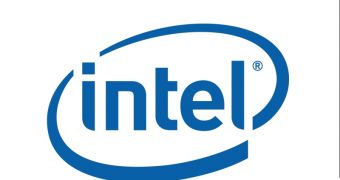Since Intel came out with the Core CPU architecture, everybody loved it, from the very beginning; and it's understandable, I mean, who wouldn't like to see a processor overclock from 1.8GHz to 3.6GHz on air cooling alone. But not everybody wants to overclock their CPU, some actually like it when it runs at stock speed, those people either don't know how to overclock a CPU, or are scared of the process because they've never done it before, or simply because they don't want to void the warranty. In these cases, how were the people convinced that the Core-based processors are worth upgrading or choosing as a solution for their new system? The answer is simple: marketing.
If money makes the world go round, then marketing is the machine that makes the money, sort of similar to another interesting saying, that men rule the world, and women rule the men, to use it, and ? well, let's not digress. If marketing is such a powerful tool, Intel surely knows how their latest gimmick doesn't have to do with new technologies, but rather with the fine-tuning of "old" ones. Their Core line of processors had until recently, on the desktop segment, two distinct series of processors, the 1066MHz FSB, 4MB L2 cache processors and the 1066MHz FSB, 2MB L2 cache (4MB cache with half of it disabled) processors, both from the Conroe line. Then the market got another line, the 800MHz FSB, 2MB L2 cache Allendale processors.
Other than these two, Intel didn't have much to show off for the general public, so they began making little adjustments, one of these being the introduction of 4MB L2 cache on new processors based on the Conroe line, the ones that had 2MB disabled, and also introducing 1333MHz FSB for their native 4MB L2 cache processors. By doing so, they hoped to draw the attention to themselves, again. That is why they have also planned to release a 1333MHz FSB Kentsfield quad-core processor. The name for this model will be Intel Core 2 Extreme QX6850. The news came just days after Intel released the QX6800 processor, and fits Intel MO (modus operandi) so far.
The processor will run at 3.0GHz, a small leap from the 2.93GHz the QX6800 is situated at, and will have a price tag of $999 for 1000 units purchased, on its release. But Intel isn't stopping here, oh no, they also want a piece of the 4-way server market. Up until now, AMD ruled that part of the market, because Intel only had 4-way Netburst-based processors, but Intel will release in the third quarter of this year their new Core microarchitecture-based 4-way processors belonging to the Tigerton family.
In this line, there will be the Xeon MP E7310 (1.6GHz/2MB x 2 L2, 80W TDP, $856), E7320 (2.13/2MB L2 x 2, 80W TDP, $1177), E7330 (2.4GHz/3MB L2 x 2, 80W TDP, $1391), E7340 (2.4GHz/4MB L2 x2, 80W TDP, $1980), and X7350 (2.93GHz/4MB L2 x2, 130W TDP, $2301). The Xeon MP 73xx series of processors are based on the quad-core Tigerton-QC core, and feature 1066MHz FSB, Virtualization Technology, EM64T and DBS. The line of processors for blade servers includes the Xeon MP L7345 (1.86GHz/4MB L2 x 2, 50W TDP, $2301). From the Tigerton series, the dual-core processors will have a Tigerton-DC core and include two members: Xeon 7210(2.4GHz/4MB x 2 L2, 80W TDP, $856) and 7220(2.93/4MB x 2 L2, 80W TDP, $1177).

 14 DAY TRIAL //
14 DAY TRIAL //